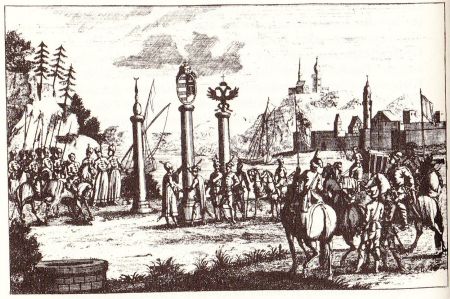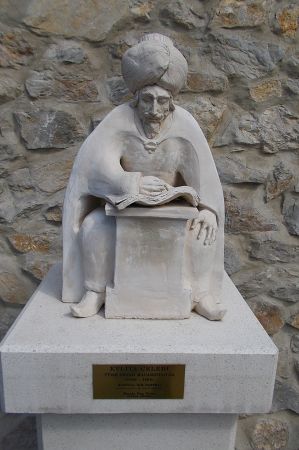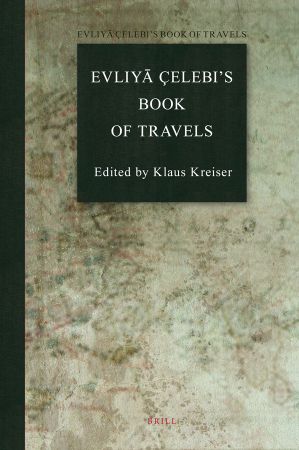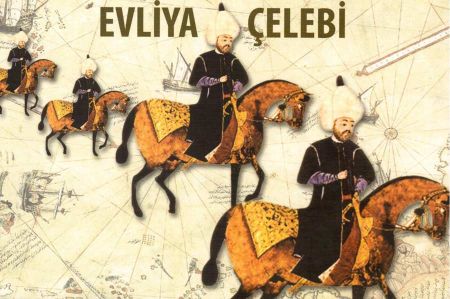Evliya Çelebi - Traveler on behalf of the Sultan
- Written by Portal Editor
The son of Dervis Mehmed Zilli Efendi and his wife, a lady-in-waiting from the Caucasus, Evliya Çelebi was born on March 25, 1611 in the Unkapanı district of İstanbul.
Due to the very good living conditions as the son of the first court goldsmith Sultan Ahmed I and the associated income of the father, who was also called Derviş Mehmed Ağa or Derviş Mehmed Ağa-i Zıllî and was a well-known personality in Istanbul at the time, Evliya Çelebi had one carefree childhood. After the Ottoman conquest of Istanbul, his ancestors, originally from Kütahya, had moved to Istanbul.
These living conditions allowed Evliya Çelebi to study at the Medrese Şeyhülislâm Hâmid Efendi, after which he received the post of Koran reciter in the Seraglio. This is how he met Keçi Mehmed Efendi, who was responsible for his further education in Arabic grammar, music, calligraphy and in-depth study of the Koran at the Sultan Palace High School. Evliya Çelebi has always shown himself to be a very teachable student, who is talented and continued his education on his own.
Evliya Çelebi began to travel the first parts of Ottoman Empire
 With the active support of his uncle Melek Ahmed Pasha, Evliya Çelebi was then able to get a job directly at the court of Sultan Murad IV in 1638, he was accepted as a body cavalryman. This job enabled him to explore Istanbul and the surrounding area, carefully noting down his observations and other special anomalies right from the start, which also became known at court. As early as 1640, Evliya Çelebi began to travel the first parts of the Ottoman Empire in the direction of Bursa, Izmit and Trabzon on a semi-official mission, and as early as 1645 he did not stop at the national borders, because he traveled to Crimea as an envoy of the Ottomans to the Tatar Khan .
With the active support of his uncle Melek Ahmed Pasha, Evliya Çelebi was then able to get a job directly at the court of Sultan Murad IV in 1638, he was accepted as a body cavalryman. This job enabled him to explore Istanbul and the surrounding area, carefully noting down his observations and other special anomalies right from the start, which also became known at court. As early as 1640, Evliya Çelebi began to travel the first parts of the Ottoman Empire in the direction of Bursa, Izmit and Trabzon on a semi-official mission, and as early as 1645 he did not stop at the national borders, because he traveled to Crimea as an envoy of the Ottomans to the Tatar Khan .
His travels, which he documented extensively in writing, continued to lead, as a result of which he increasingly became a writer of travel books (Seyahatnâme) and reported as a contemporary witness about the Ottoman world of the late 17th century. He became a messenger for the army commanders in Epirus, worked as an accountant for the governor-general in Erzurum, which enabled him to travel to Azerbaijan and Georgia. Evliya Çelebi did not return to Istanbul for a short time until 1648, but traveled to Damascus a little later. In 1651, Evliya Çelebi traveled through Rumelia, staying in Sofia and Silistra for a long time and, after the Battle of St. Gotthard, also visited the city of Buda in Hungary and Lake Balaton. Between 1665 and 1670 he traveled through Austria, Albania, Dalmatia, Thessaly, Crete, Komotini and Thessaloniki. Evliya Çelebi died probably in 1683 on his last great journey, which took him to Egypt.
Evliya Çelebi describes the location and orientation of fortresses
 As at the beginning of his active travel time, Evliya Çelebi has talked about all the cities he has traveled to, their most important buildings (he was almost always particularly interested in religious buildings, regardless of whether they were churches, mosques or synagogues) and also their history. He described the people he encountered as well as their customs, their songs, their language and their clothing. He takes part in festivals and celebrations, whether of a religious or secular nature, in order to be able to understand and describe people and interpersonal relationships. He describes important personalities as well as entire family clans, poets and musicians, officials or administrations. Even economic aspects of a region and its agriculture are not left unmentioned. He describes the location and orientation of fortresses, and even details of the military situation can be found in his notes.
As at the beginning of his active travel time, Evliya Çelebi has talked about all the cities he has traveled to, their most important buildings (he was almost always particularly interested in religious buildings, regardless of whether they were churches, mosques or synagogues) and also their history. He described the people he encountered as well as their customs, their songs, their language and their clothing. He takes part in festivals and celebrations, whether of a religious or secular nature, in order to be able to understand and describe people and interpersonal relationships. He describes important personalities as well as entire family clans, poets and musicians, officials or administrations. Even economic aspects of a region and its agriculture are not left unmentioned. He describes the location and orientation of fortresses, and even details of the military situation can be found in his notes.
However, all of these descriptions are made without any real systematic approach. These descriptions can also be assigned less to a main scientific topic. He just describes the things that seem essential to him, sometimes consciously describing in such a way that the reader would like to continue reading with interest, in short, there are also exaggerations, just as he doesn't take the numbers so precisely.
Ten volumes of his logbook "Seyahatnâme"
 Evliya Çelebi publishes all these reports in a ten-volume series entitled Seyahatnâme. Loosely translated, this title simply means “travel book”.
Evliya Çelebi publishes all these reports in a ten-volume series entitled Seyahatnâme. Loosely translated, this title simply means “travel book”.
The author was probably not aware that these works are still one of the most important sources for life and culture in the Ottoman Empire of the 17th century. Words of the same root can often be found in different cultures, which he recorded and thus provide linguists with information about migrations and language mixing today. He describes the special features by including his feelings, even comments and thoughts.
The ten volumes of his logbook "Seyahatnâme"
1. Istanbul and Surroundings (1630)
2. Anatolia, the Caucasus, Crete and Azerbaijan (1640)
3. Syria, Palestine, Kurdistan, Armenia and Rumelia (1648)
4. Iraq (1655)
5. Russia and the Balkan Peninsula (1656)
6. the Hungarian campaigns (1663/64)
7. the Austrian Empire, the Crimea and again the Caucasus (1664)
8. Greece, again the Crimea and Rumelia (1667-1670)
9. the Hajj (pilgrimage) to Mecca (1671)
10. Egypt and Sudan (1672)
Please read as well:
